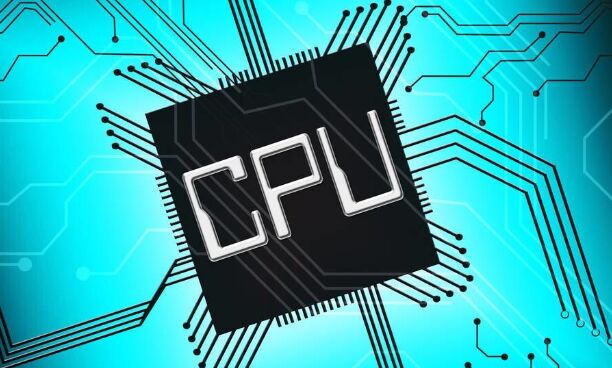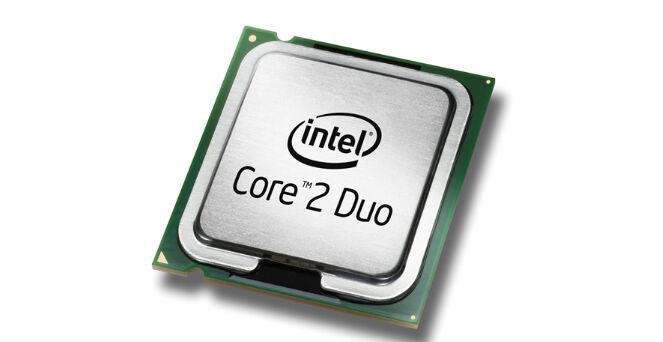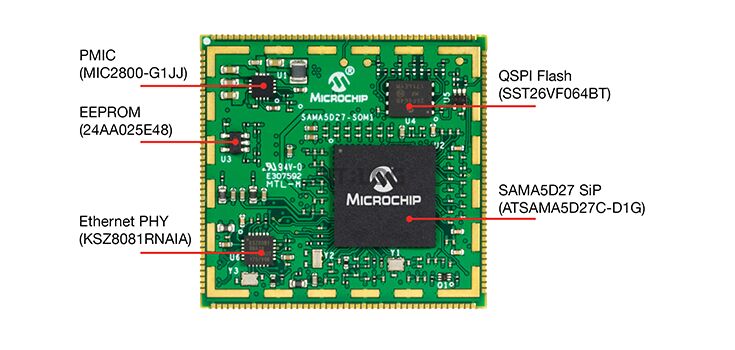Microprocessor usually refers to a programmable special integrated circuit, all of its components are miniaturized into one or several integrated circuits. A microprocessor accepts coded instructions on one or more of its ports, executes the instructions, and outputs signals describing its state. These instructions can be entered, collected or stored internally.

A microprocessor is a central processing unit composed of one or a few large-scale integrated circuits. These circuits perform the functions of a control unit and an arithmetic logic unit.
Compared with the traditional central processing unit, the microprocessor has the advantages of small size, light weight and easy modularization. Microprocessors are ubiquitous, whether it is home appliances such as video recorders, smart washing machines, mobile phones, or automotive engine control, as well as CNC machine tools, missile precision guidance, etc., all have different types of microprocessors embedded in them.
Microprocessors are made up of millions or even billions of transistors that switch on and off in nanoseconds. According to specific circuit design and layout, these transistors constitute the logic circuit of the microprocessor, enabling it to realize complex calculation and control functions.
Microprocessors are primarily used to execute instructions and data processing tasks in computer systems. It is the core component of the computer, responsible for performing various calculations, logical judgments, data transmission and other operations, and is one of the most important components of the computer system.
Ⅰ. History of microprocessor development
Ⅱ. 8, 16, 32-bit processors
Ⅲ. The role of the microprocessor
Ⅳ. Microprocessor structure
Ⅴ. Embedded-Microprocessor Application
Ⅵ. Microprocessor Speed and Power Considerations
Ⅶ.What is the introduction of microprocessor?
Ⅷ.How microprocessor works?
Ⅸ.What are the characteristics of a microprocessor?
X.What is microprocessor architecture?
Ⅰ. History of microprocessor development
Since the invention of transistors in 1947, semiconductor technology has experienced several generations of silicon transistors, integrated circuits, VLSIs, and very large-scale integrated circuits in the past 50 years. The speed of development is unmatched by other industries.
With the rapid development of large-scale integrated circuit technology, chip integration density is getting higher and higher, and CPU can be integrated on a semiconductor chip. This large-scale integrated circuit device with central processing unit function is collectively referred to as "microprocessor".
Just like the development of other modern technologies, the era of microprocessors seems to have arrived overnight. Three companies, three plans, almost invariably became the pioneers of the microprocessor industry. They are Intel's Intel 4004, Texas Instruments' TMS 1000 and Garrett AiResearch's CADC (Central Air Data Computer) for F14 MP944.
Texas Instruments patented the microprocessor. On September 4, 1973, Gary Boone obtained the US patent for a single-chip microprocessor, the patent number is 3757306. But we may not know for sure which company was the first to make a microprocessor in the lab. In 1971 and 1976, Intel and Texas Instruments reached a patent mutual licensing agreement twice. According to the agreement, Intel paid Texas Instruments a fee for the use of microprocessor patents.
Ⅱ.8, 16, 32-bit processors
1.8 bits
introduce:
An 8-bit processor is a microprocessor that refers to a processor that can process data 8 bits (one byte) at a time. This means that the data bus width of the processor is 8 bits, and 8 bits of data can be processed simultaneously in one clock cycle. 8-bit processors are usually used in low-cost, low-power, resource-limited embedded systems and some specific application scenarios.
Development History:
Following the 4-bit 4004, Intel designed the world's first 8-bit microprocessor, the Intel 8008.
Motorola introduced the MC6809, becoming the leader in the 8-bit processor market. It is considered by some to be the most powerful pure 8-bit processor ever - and the most complex of all hardwired processors ever produced. Processors more advanced than MC6809 later used microcode technology. This is because hard-wired logic cannot meet more and more complex designs and is gradually eliminated.
The CDP1802 produced by RCA, namely RCA COSMAC, is the pioneer of the processor used in aerospace. This chip was used on NASA's Voyager and Viking space probes in the 1970s. The Jupiter probe Galileo, launched in 1989, was also equipped with this processor. The choice of CDP1802 is firstly because it can operate with very low power consumption*; secondly, because the process it adopts can better resist cosmic rays and electric pulses. Therefore, 1802 is also considered to be the first radiation-resistant microprocessor.
2.16 bits
introduce:
A 16-bit processor is a microprocessor that refers to a processor that can process data 16 bits (two bytes) at a time. This means that the data bus width of the processor is 16 bits, and 16 bits of data can be processed simultaneously in one clock cycle. Compared with 8-bit processors, 16-bit processors have greater data processing capabilities and broader addressing capabilities.
Development History:
The first multi-chip 16-bit microprocessor was the IMP-16 launched by National Semiconductor Corporation in early 1973, and the 8-bit IMP-8 chipset was launched in 1974. In 1975 the company introduced the first single-chip 16-bit microprocessor, PACE, a new version based on NMOS technology, which was soon replaced by the INS8900.
In addition, the TMS 9900 from Texas Instruments is also an early single-chip 16-bit processor, which is compatible with the TI 990. 9900 is used in TI 990/4 minicomputer, TI-99/4A home computer and TM990 series OEM brand microcomputer. The chip was packaged in a ceramic 64-pin dual internal wire (DIP) chip, while most 8-bit microprocessors at the time used the cheaper 40-pin DIP. The follow-up product TMS 9980 is launched for Intel's 8080. It is fully compatible with the 16-bit instruction set of TI 990 and can transmit 8-bit data at a time. It is designed as a plastic 40-pin DIP, but it can only address 16KB. TMS 9995 is the third chip of this series, using a brand new design. This series of products was later extended to 99105 and 99110.
Intel took a different path. Since there was no minicomputer to emulate, they adopted the method of expanding 8080 to design the 16-bit 8086, which was the first member of the x86 family that almost dominated PC chips. The 8086 launched by Intel made the software on the 8080 economical to be transplanted and reused, and the commercial success exceeded expectations. Then Intel released 80186, 80286, and the 32-bit 80386 launched in 1985. These processors are all forward compatible, creating Intel's dominance in the PC market.
3.32 bits
introduce:
A 32-bit processor is a microprocessor that refers to a processor that can process data 32 bits (four bytes) at a time. The data bus width of a 32-bit processor is 32 bits, and it can simultaneously process 32-bit data in one clock cycle, which has higher computing power than 16-bit and 8-bit processors. Because the address bus width of the 32-bit processor is larger, it can address a larger range of memory space and handle more data and programs.
Development History:
16-bit designs had just entered the market, and 32-bit microprocessors appeared. The most famous 32-bit microprocessor is the MC68000 launched by Motorola in 1979. The so-called 68K chip has 32-bit registers, but both internal and external data buses are 16-bit, which reduces the chip's pin count. Motorola describes it as a 16-bit processor, but apparently this is a chip with a 32-bit architecture. The MC68000 quickly became the most popular model of this type of CPU due to its high speed, large memory address space (16 megabytes) and low price.
Intel's first 32-bit microprocessor was the iAPX 432, which was introduced in 1981 but was not a success in the market. This product has an advanced object-oriented architecture, but compared with other similar products, especially the 68000, its performance is poor.
The success of the 68000 allowed Motorola to continue to launch the MC68010, a chip that added support for virtual memory. In 1985, the MC68020 was introduced, which added a complete 32-bit data and address bus. The 68020 has achieved great success in the Unix supermicrocomputer market, and many small companies also use it to produce desktop systems. The MC68030 chip integrates a memory manager, and has almost become a standard processor for all machines except DOS. MC68040 synthesizes the floating-point arithmetic unit, and the mathematical operation performance is improved. 68050 failed to meet the design requirements and was not issued. The successor 68060 adopted a faster RISC design. In the early 1990s, 68K began to fade out of the desktop system market.
Some chips faded, or even faded, out of the market during the microprocessor wars of the late 1980s. As a result, the Sequent NS 32032 system, which had only one excellent product, gradually disappeared, and Sequent also switched to Intel's microprocessors.

Ⅲ. The role of the microprocessor
1. System scheduling: Under the control of the operating system, the microprocessor may need to perform task scheduling and process switching to achieve concurrent execution of multiple tasks.
2. Instruction decoding and execution: The microprocessor reads instructions from the memory, decodes these instructions, and then performs corresponding operations according to the instructions, including arithmetic operations, logical operations, data transmission, etc.
3. Interprocessor communication: In a multiprocessor system, microprocessors may need to communicate and synchronize between processors to achieve parallel processing and cooperative work.
4. Data processing: The microprocessor can perform various processing on data, including mathematical operations such as addition, subtraction, multiplication, and division, as well as logical operations such as and, or, and not.
5. Memory management: The microprocessor is responsible for managing the computer's memory, including reading and writing data, as well as loading and executing programs.
6. Inter-processor communication: In a multi-processor system, microprocessors may need to communicate and synchronize between processors to achieve parallel processing and cooperative work.
Ⅳ. Microprocessor structure
The complexity of an integrated circuit is limited by the following physical constraints: the number of transistors that can be placed on a chip, the number of package terminals that can connect the processor to the rest of the system, the number of interconnections that can be made on the chip, and the amount of space a chip can spread out. of heat. Advanced technology has made it feasible to manufacture more complex and powerful chips.
As integrated circuit technology advances, it becomes feasible to manufacture more and more complex processors on a single chip. Data objects got larger in size; word lengths increased from 4- and 8-bit words to today's 64-bit words, allowing more transistors to be used on the chip. Additional features have been added to the processor architecture; more on-chip registers speed up program execution, and complex instructions can be used to make more compact programs.
The smallest hypothetical microprocessor might include only the arithmetic logic unit (ALU) and the control logic section. The ALU performs addition, subtraction, and operations such as AND or OR. Each operation of the ALU sets one or more flags in the status register, which indicate the result of the previous operation (zero value, negative number, overflow, or other). The control logic retrieves the instruction code from memory and initiates the sequence of operations required by the ALU to execute the instruction. A single opcode can affect many separate data paths, registers, and other elements of the processor.
The physical limitations of integrated circuits necessitate practices such as bit-slicing methods. Instead of processing all longwords on one integrated circuit, multiple circuits for a subset of each data word are processed in parallel. The ability to place a large number of transistors on a single chip has made it possible to integrate memory with a processor on the same chip. This CPU cache has the advantage of being faster than off-chip memory access and can increase system processing speed for many applications. Processor clock frequency increases faster than external memory, so cache memory must be used if the processor is not delayed by slower external memory.
Ⅴ. Embedded-Microprocessor Application
Embedded microprocessor is a kind of microprocessor specially used in embedded systems, which is designed and optimized for embedded applications, and is usually integrated on the motherboard or chip of embedded devices. Embedded systems refer to those computer systems that are dedicated to specific functions or tasks, and usually run on specific hardware platforms, rather than having general-purpose performance like general-purpose computer systems.
Thousands of items not traditionally related to computers include microprocessors. These include white and small appliances, automobiles (and their accessory equipment), car keys, tools and test instruments, toys, light switches/dimmers and circuit breakers, smoke alarms, battery packs and high-fidelity audio ideo components ( from DVD players to phonograph turntables).
The microprocessor control program (embedded software) can be easily customized to the different needs of the product line, allowing for increased performance with minimal product redesign. Different functions can be implemented in different models of the production line with different production costs.
Microprocessor control of the system can provide control strategies that are not possible using electromechanical controls or dedicated electronic controls. For example, an engine control system in a car can adjust ignition timing based on engine speed, engine load, ambient temperature, and any observed tendency to knock, allowing the car to run on a variety of fuel grades.
Features:
1. Embedded microprocessors are usually designed with low power consumption to meet the power constraints of embedded devices. Their performance is also optimized to suit the needs of specific applications.
2. Embedded microprocessors usually have integrated peripheral interfaces, such as serial ports, SPI, I2C, etc., to communicate with other hardware components and sensors.
3. The package of the embedded microprocessor is usually smaller and takes up less space, which is suitable for the compact design of embedded devices.
4. The instruction set and functions of embedded microprocessors are usually optimized for specific applications to improve execution efficiency and reduce costs.

VI. Microprocessor Speed and Power Considerations
1. The clock frequency of a processor refers to the number of clock cycles executed per second, usually in Hertz (Hz). A higher clock frequency means that more clock cycles can be used to execute instructions, thereby completing more calculations per unit time. However, the clock frequency is not the only factor that affects the performance of the microprocessor. The architecture of the microprocessor, cache size, pipeline technology, etc. will also have an impact on performance.
2. A longer word length allows the processor to perform more calculations per clock cycle, but corresponds to a physically larger integrated circuit die, with higher standby and operating power consumption. 4, 8 or 12 bit processors are widely integrated into microcontrollers running embedded systems. A 16, 32 or 64 bit processor is used if the system is expected to handle large amounts of data or requires a more flexible user interface.
3. For many devices and systems, power management is an important consideration. A microprocessor with high power consumption can cause the device to heat up severely, increasing cooling costs, and shortening battery life for battery-operated devices. Therefore, when choosing a microprocessor, consider its power consumption characteristics, and try to choose a processor with low power consumption, especially for mobile devices and embedded systems.
4. For system-on-chip or microcontroller applications that require extremely low-power electronics, an 8- or 16-bit processor on a 32-bit processor can be selected, or with noise-sensitive on-chip analog electronics (such as high-resolution rate ADC or both) as part of a mixed-signal integrated circuit. Running 32-bit arithmetic on an 8-bit chip may end up using more power because the chip has to execute software with multiple instructions.
Ⅶ.What is the introduction of microprocessor?
Microprocessor performs three basic things while executing the instruction: It performs some basic operations like addition, subtraction, multiplication, division, and some logical operations using its Arithmetic and Logical Unit (ALU). New Microprocessors also perform operations on floating-point numbers also.
Ⅷ.How microprocessor works?
The microprocessor fetches those instructions from the stored area (memory), then decodes it and executes those instructions till STOP instruction is met. Then, it sends the result in binary form to the output port.
Ⅸ.What are the characteristics of a microprocessor?
It assimilates the functions of a CPU on to a single IC. It can perform some basic operations like addition, subtraction, multiplication, division and some logical operations using its Arithmetic and Logical Unit (ALU). Move data from one location to another.
X.What is microprocessor architecture?
The microprocessor is a single IC package in which several useful functions are integrated and fabricated on a single silicon semiconductor chip. Its architecture consists of a central processing unit, memory modules, a system bus, and an input/output unit.



